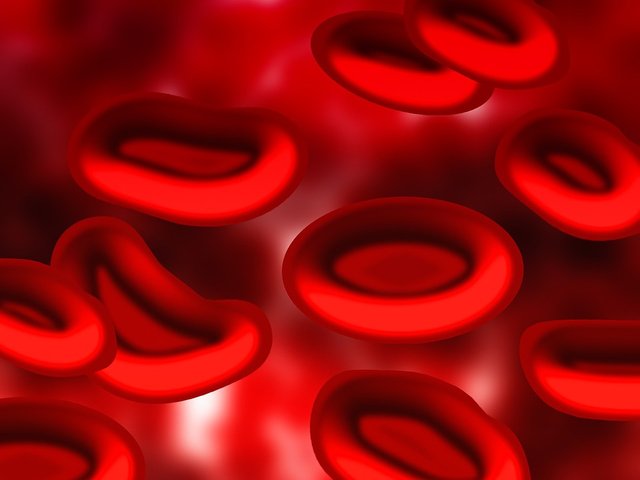📢 Blood Infection: Symptoms, Causes and Treatment
Bacteria, fungi and viruses are organisms that can only be seen under a microscope, composed of a single cell that, when entering your body, reproduce causing an infection. For practical purposes, we will call these little ones "microorganisms".


What is an infection in the blood?
The definition of the infection in the blood is the presence of microorganisms that, being in the bloodstream, attack any vital organ and can have fatal consequences. It can be caused by 3 types of microorganisms, although cases by viruses are very rare.
The different names that are given to the infection of the blood have to do with the type of reactions that the organism has towards the presence of microorganisms.
In medical terms there is:
✔Bacteremia or septicemia: It is the presence of microorganisms in the blood, it is a mild infection that often the body fights thanks to its defenses, without the need of treatment.
✔Systemic inflammatory response syndrome (SIRS): When there are microorganisms in the blood, the body responds with inflammation of many of the organs that we have, this disease has to be treated with antibiotics and anti-inflammatories.
✔Sepsis: It is a serious disease that if not treated in time is fatal. It is given by the presence of SRIS, to confirm that there are bacteria in the blood a laboratory test called blood culture must be performed.
✔Severe sepsis: It is when the organs of the body respond to the infection in the blood, in many cases failing to function as self-protection. This is a condition that if not treated in time causes death.
The disease begins when your body tries to protect your important organs from being damaged, forming small clots to prevent the passage of bacteria to vital organs.
The toxins released by bacteria, fungi or viruses cause damage to body cells, along with clots that form to protect organs, which also suffer from lack of oxygen.
Septic shock occurs when the heart tries to accelerate its rhythm because it knows that oxygen is not reaching all organs well, but despite the effort the oxygen does not reach, then the blood pressure drops too much.

Causes of infection in the blood
The infection in the blood can be originated by an infection in any part of the body. This type of infection has countless causes, some of them are:
Infection of throat, kidney, lungs, molars
Infected wounds
Contaminated surgeries
Rupture of the appendix
Surgical procedures such as placement of probes, dialysis catheter or for chemotherapy
Some contaminated insect bites
Skin infections
Bacteria resistant to antibiotics
Who can get sick from a blood infection?
There are conditions that can make you more vulnerable to infection, among these groups of people are:
✔ People who have low defenses in their body as those who suffer from any type of cancer or suffer from HIV.
✔ Minors and older adults, because in general they also have less defenses in their body.
✔ Drug users who use syringes more than once or share it with several people.
✔ People with poor personal hygiene.
✔ The people who have had treatments or dental surgeries.
✔ Have a catheter or tube installed permanently.
✔ Taking antibiotics for a long time.
Due to the many ways a person can get the infection, it is important to maintain good hygiene. Always wash fruits and vegetables. Cook all the meats so that you do not notice any pink color. Treat all wounds, even the smallest scratch, wash the affected area and use topical antibiotics. By taking preventive measures, you will decrease the likelihood of contracting the germs that cause blood infections.

Symptoms of Blood Infection
Some of the symptoms you can feel when there is an infection in the blood are chills, fever and increased heart rate, this is when you have faster beats and faster and less deep breaths.
It is unlikely that you can diagnose that with these symptoms you may have sepsis, but if these occur after some surgery, dental cleaning, placement of catheter or probe you should go to your doctor immediately.
The most serious symptoms and that are a medical emergency are:
- Shaking chills.
- Fever of more than 40º.
- Low blood pressure.
- Body pain.
- Rapid breathing just like the heart rate very fast.
- Sweating.
- Weakness, lack of appetite.
- Delirium or mental confusion.
- Little urine or not urinating completely.
- Loss of consciousness.
If you notice these symptoms in someone, do not wait, and take them immediately to a hospital, because they are symptoms that can be fatal.

Diagnosis of Blood Infection
The exams may also include a chest x-ray and if there is an infected wound, take samples of the wound to make a culture and know what is the bacteria that is causing the infection and with what antibiotic you eliminate it.

Treatment of Blood Infection

Medications to increase blood pressure, called vasopressors, are often used when fluids through the vein are not enough to maintain normal blood pressure.
Oxygenation with an oxygen mask is also applied, but sometimes with the need to connect the patient to an artificial respirator. If renal failure already exists, the patient should be dialyzed.
References Of Investigation:
Blood Infection by Bacteria
Blood Infection Causes Translate to English
Book
Mermel LA, Allon M, Bouza E, Craven DE, Flynn P, O'Grady NP, Raad II, Rijnders BJ, Sherertz RJ, Warren DK. Clinical practice guidelines for the diagnosis and management of intravascular catheter-related infection: 2009 Update by the Infectious Diseases Society of America. Clin. Infect. Dis. 2009 Jul 01;49(1):1-45.
Video: DNA cloning and recombinant DNA | Biomolecules | MCAT | Khan Academy
All images have the proper permission for their publication and each one has its source.

|| @utopian-io || @anomadsoul || @acidyo || @ocd-resteem || @pharesim || @vortac || @cervantes || @hendrikdegrote || ¡Vote for witness! Here: https://steemit.com/~witnesses




Upvote this for me please? https://steemit.com/christianity/@bible.com/verse-of-the-day-hebrews-4-16-nlt
Upvote this for me please? https://steemit.com/christianity/@bible.com/verse-of-the-day-hebrews-4-16-nlt
Muy importante esta información sobre las infecciones de la sangre y las formas de tratamiento. Son multiples y variados los microorganismos que nos pudieran ocasionar una bacteremia.
Los trastornos sanguíneos son causados por anomalías en la hemoglobina o déficit de factores importantes para una buena coagulación de esta, obviamente sin dejar a un lado el principal causante de la infección como son las bacterias. Gracias por pasar.
Congratulations! This post has been upvoted from the communal account, @minnowsupport, by caracasfrases from the Minnow Support Project. It's a witness project run by aggroed, ausbitbank, teamsteem, theprophet0, someguy123, neoxian, followbtcnews, and netuoso. The goal is to help Steemit grow by supporting Minnows. Please find us at the Peace, Abundance, and Liberty Network (PALnet) Discord Channel. It's a completely public and open space to all members of the Steemit community who voluntarily choose to be there.
If you would like to delegate to the Minnow Support Project you can do so by clicking on the following links: 50SP, 100SP, 250SP, 500SP, 1000SP, 5000SP.
Be sure to leave at least 50SP undelegated on your account.
Buen post, muy interesante! Bien hecho @caracasfrases
Good information! Sepsis is a huge concern.